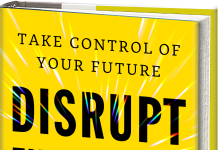People skills: Attentive listing, observing, and reading; perceiving and empathizing; effective and appropriate use of words, tone, expressions, and gestures—verbal, written, and otherwise; one-on-one and in groups; in person and remotely.
Manager: “They want constant feedback, yet most of them won’t even pick up the phone or make an effort to talk in person, even when we are in the same place at the same time and, when they do, it makes you kind of wish they hadn’t… They want to be invited to the important meetings, but then show up late or play with their phones during the meeting… Even e-mail is passé to them, so they send e-mails that look like texts.”
Second-wave Millennial/Gen Zer: “Seriously?! Why waste so much time and so many words? Anyway, texting gives me a little space. Meeting in person or on the phone makes me feel kind of uncomfortable, like I’m on the spot all of a sudden.”
The Bridge: What You, the Manager, Need to Remember
Are today’s young workers’ relative weakness in people skills simply the result of becoming so accustomed to communicating with their devices that they are losing the ability to communicate well in person and on the phone?
That’s surely a big part of the story: Communication practices are habits, and most Gen Zers are in the habit of remote informal staccato and relatively low-stakes interpersonal communication because of their constant use of handheld devices and social media and instant messaging.
The crux of people skills is “other orientation,” paying close attention to the signals of those with whom one is interacting, without getting distracted, and then responding to those signals effectively and appropriately. But Gen Zers are very self-focused. Plus, they often are distracted. And they are so unaccustomed to engaging in person and on the telephone that their powers of perception often are not well developed. No wonder they are not very good at reading people, especially in person and on the phone.
Think of it this way: Have you ever had a big misunderstanding (or fight) with someone via text messaging? Often, that happens partly because words alone, especially informal staccato messages, are easy to misunderstand. That’s because tone, expressions, and gestures are a big part of how human beings communicate. So much meaning is lost or misconstrued in texts. Now throw in the social media dimension—in which communication is an interactive performance among peers (or not even peers, but the virtual personas of peers). This is the information environment in which Gen Zers honed their interpersonal communication practices. Even their in-person interactions—especially with their peers—are almost always underwritten and mediated by their social media network relationships. No wonder they so often say the wrong things at the wrong times.
Building relationships in the relatively formal high-stakes real world of the workplace is a brand new challenge for Gen Zers. School is probably their closest analogue. But in school, Gen Zers largely have been spoon-fed the structure and substance of their important formal communication. In the workplace, they are less likely to be spoon-fed. Yes, there is structure in most workplaces. Nonetheless, a shocking amount of the important communication in most workplaces is largely ad hoc, hit and miss: There is a lot of “touching base” and “call me if you need me” and mediocre meetings and long, multi-recipient e-mail chains, but there is usually way too little regular structured communication. This is one reason why Gen Zers don’t treat interpersonal communication in the workplace with greater formality. No wonder Gen Zers don’t realize that the burden is on them to ensure their interpersonal communication at work is more structured and substantive.
Like any other habits, communication habits can be changed, but it is not easy.
If you are the leader, then you should take on more of the burden of making sure that your communication with your Gen Zers (and all of your employees, for that matter) is high structure and high substance. Engage every single Gen Zer in a regular structured one-on-one dialogue—scheduled one-on-ones at least once a week. The one-on-ones with you will give them the chance to practice interacting in a more professional manner—at least with you. As you fine-tune your ongoing dialogue with each Gen Zer, they will become accustomed to your one-on-ones. Over time, you will help them learn to prepare better and better agendas for your one-on-ones: increasingly organized, clear, and focused.
Make Them Aware/Make Them Care
This is the message I recommend managers deliver when they are trying to convince their young employees to care about developing good people skills:
“Here’s why you should care about improving your people skills: Even though it seems like your interactions with other people are a matter of personal style, in fact, there are proven best practices for workplace communication. When people do not follow communication best practices, things are much more likely to go wrong. Poor communication is the No. 1 cause of unnecessary problems—great and small—in the workplace.
Poor communication also leads to suboptimal workplace relationships, including conflicts between and among employees.
No matter where you work or what you do, good people skills will help you get ahead faster. Poor people skills will always hold you back. Some people are known as being really great to work with, while others are known for being difficult. In either case, that’s almost always a commentary on the person’s communication practices. You want to be known as someone who is great to work with.
That means you need to learn best practices and build new habits to:
- Learn how to tune in to other people and read them more effectively
- Take on the burden of putting more structure and substance into your communication with key people
- Learn best practices for expressing yourself more effectively—one-on-one and in groups—in person and remotely
If you learn those best practices and develop better habits, you will avoid many more unnecessary problems; you will build much better workplace relationships; and you will become one of those people with a reputation for being really great to work with.”
Excerpt from “Bridging the Skills Gap: Teaching the Missing Basics to Today’s Young Talent” by Bruce Tulgan (Wiley, September 2015). For more information, visit http://www.amazon.com/Bridging-Soft-Skills-Gap-Missing/dp/1118725646
Based in New Haven, CT, Bruce Tulgan is a leading expert on young people in the workplace. He is an advisor to business leaders all over the world, the author or coauthor of numerous books, including the classic, “Managing Generation X” (1995); best-seller “It’s Okay to Be the Boss” (2007); “Not Everyone Gets a Trophy’ (2009); “The 27 Challenges Managers Face” (2014); and Bridging the Skills Gap (2015). Since founding management training firm RainmakerThinking in 1993, he has been a sought-after keynote speaker and seminar leader. Follow him on twitter @brucetulgan. He can be reached at brucet@rainmakerthinking.com.



